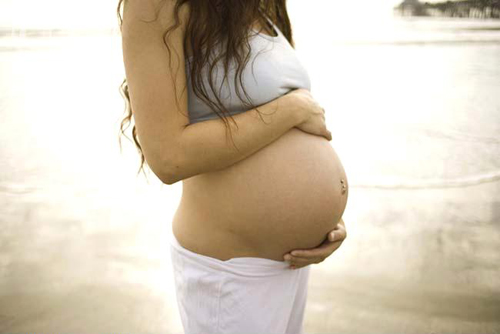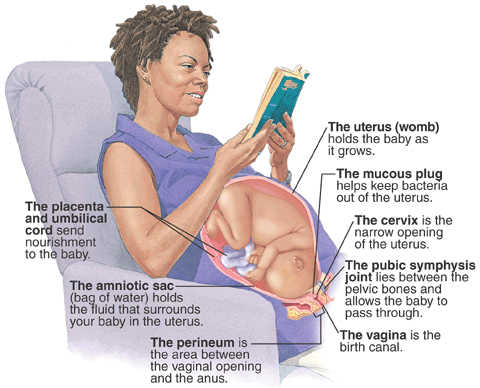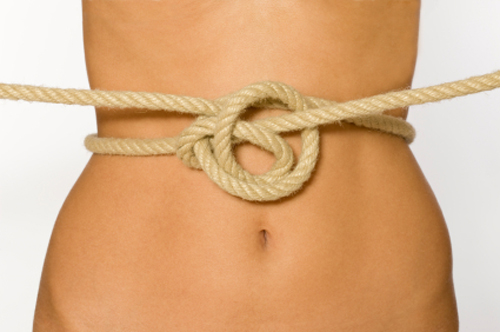You’re sure the day has come. You’re having contractions and it feels like your baby is ready to meet the world. The only problem? You get to the hospital only to hear you’re not in labor. It’s Braxton Hicks. But what does that mean exactly? What are Braxton Hicks contractions? Why do they happen? When could they start? How long will they last? What do Braxton Hicks feel like? Most importantly, how can one tell the difference between Braxton Hicks contractions and the real thing? Let’s answer some of those questions now.

What are Braxton Hicks Contractions?
Braxton Hicks contractions (also known as false labor or practice contractions) are, simply put, contractions you may feel starting as early as six weeks into your pregnancy. They generally don’t cause Mommy-to-be any pain or discomfort although they can certainly feel strange. Essentially what is happening is your uterus is getting in shape to give birth. After all, your body is going to be going through a lot when you go into labor. These contractions are just your body’s way of getting ready.
While these contractions start happening around six weeks into the pregnancy, most expectant mothers won’t start feeling them until their uterus gets a bit larger. Other women may feel them as soon as they start happening. Other women may not feel them at all. It really just depends on the woman.
Braxton Hicks contractions are fairly sporadic. You might feel them once or twice an hour but will generally not feel them more than a few times a day with each contraction lasting anywhere from less than a minute to two minutes. As I mentioned, they generally don’t cause pain or discomfort but that isn’t true for all women. Some women may feel mild cramping while others may feel pains similar to labor pains. Again, this is really something that will vary from woman to woman.

What Causes Braxton Hicks Contractions?
The term “practice contractions” is actually pretty appropriate. Braxton Hicks contractions are your body’s way of preparing for the contractions you’ll have when you go into labor. They’re caused when your uterine muscles tighten causing the discomfort. Fortunately for women experiencing the contractions, the cramping is often fairly mild, the contractions are sporadic and they only last a minute or two.
Some mothers insist a full bladder can not only irritate Braxton Hicks contractions but can actually cause them. While this has never actually been scientifically proven, to use an old cliché, the proof is in the pudding. Mothers who notice their practice contractions start mainly when they have a full bladder also indicate urinating can help relieve the contractions. Seems like pretty solid evidence to me.

What Do Braxton Hicks Feel Like?
As I mentioned in the paragraphs above, most mothers-to-be won’t feel any actual pain or discomfort when they feel Braxton Hicks contractions. Instead they’ll feel what can be described as a tightening in the tummy area. If you pull your shirt up and put your hand on your bare baby bump while you feel the contractions, you should be able to feel a difference between your contraction baby bump and your normal baby bump. It will feel noticeably harder and firmer. While it probably won’t have other people clamoring to touch your belly like they will when the baby kicks, you’ll probably find it pretty neat to feel what your body is doing.
As you get further along in your pregnancy, the Braxton Hicks contractions may change. You might notice they feel more intense and sometimes they may even start to cause you pain. Again, this is all normal. Many women experience this. In fact, it isn’t uncommon for women to rush to the hospital with Braxton Hicks contractions later in their pregnancy because they can begin to feel an awful lot like the real thing. Don’t let that make you feel discouraged or embarrassed. A lot of women are fooled by practice contractions and the staff at the hospital, your midwife or your doctor will understand that.

What is the Difference between Braxton Hicks Contractions and Labor Contractions?
Because Braxton Hicks contractions can feel like true labor contractions, many women become confused about how to tell if they are really in labor or even concerned that they won’t recognize if they go into labor. Don’t worry. You will notice when you go into labor. There is no denying it when the time comes. The four questions below can help you tell the difference between false labor and true labor. You can keep them in mind yourself or write them down for your partner to help you assess your condition and decide whether or not you need to go to the hospital.
- Where is the contraction pain focused?
False labor contractions focus almost entirely in the front of your stomach and in your pelvic area. True labor contractions start in the lower back and move to the front of your stomach.
- Do the contractions change when you move?
False labor contractions often either stop or feel better when you move around or change position. Walking, lying down and getting up can all relieve at least some of the pain associated with false labor pains. The same cannot be said for true labor contractions which will remain the same regardless of how you are positioned.
- How strong are the contractions?
False labor contractions are often much weaker than true labor contractions but they may start off strong. The major difference between the strength of false labor and true labor contractions is that false labor contractions will not get stronger as time passes while true labor contractions will only get stronger.
- How often are the contractions occurring?
During false labor, your contractions will be irregular and will not get closer together as time passes. During true labor, you’ll notice your contractions are coming at regular intervals and last about thirty to seventy seconds each. True labor contractions will also get closer together as time passes.
There are of course symptoms of true labor that are not present in false labor and should therefore be considered a pretty good indication it’s time to head to the hospital. Those symptoms are as follows:
- Bleeding
- Contractions occurring every ten minutes, contractions occurring more frequently than every ten minutes or more than five contractions in the span of one hour.
- Cramps similar to menstrual cramps
- Flu-like symptoms
- Fluid leak
- Pain or a tightening feeling in your lower back or stomach
- Pressure in your pelvic area or vagina
If you’re having painful Braxton Hicks contractions, you can try walking around. If you’re already walking, try lying down. Lying on your left side can also help ease the pain of practice contractions. Eating a small snack or even a full meal can sometimes help as well. You also might want to try getting a massage, taking a nap (if you can sleep) or having a cup of herbal tea. The most important thing you can do is try to relax. Take a warm bath, light some candles, read a book – do something to try to take your mind off it. Easier said than done, for sure, but it will do wonders for you if you’re able to do it.











